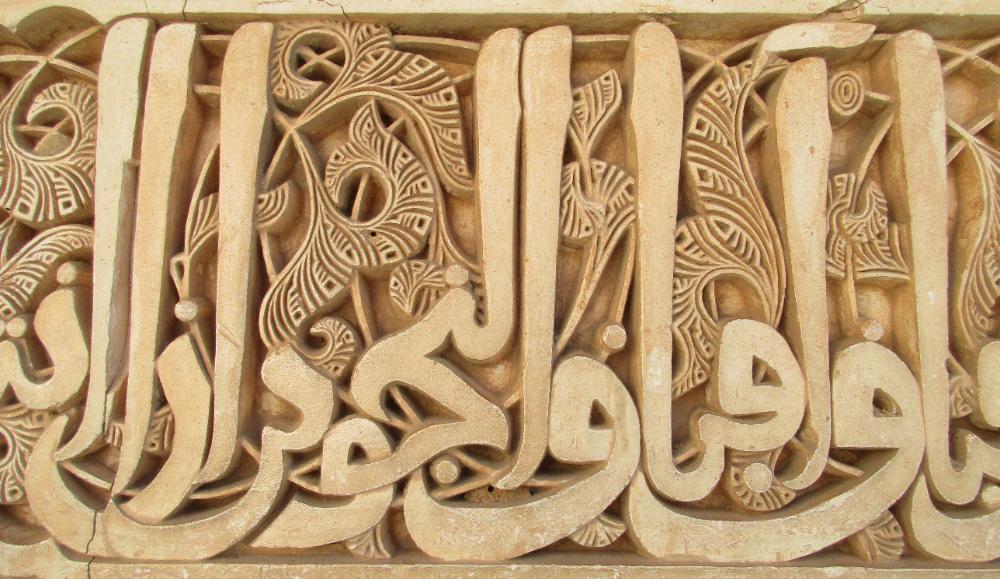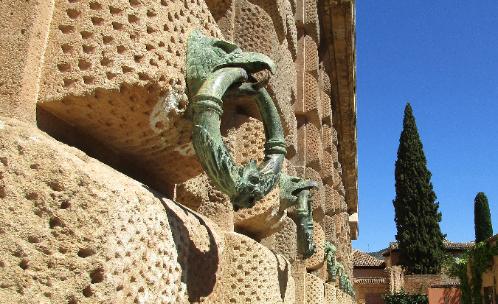
Where We Be





| For a fortress that was built in the 1250s, converted into a royal palace in 1333, then abused as a barracks during the Napoleonic wars and nearly blown up, this place has stood the test of time amazingly well. It has been heavily but respectfully restored. |































| Granada, Spain |
| The Alhambra at sunset is a sight you won't soon forget: no wonder its Arabic name translates as "the red castle" |
| Speaking of which...the nearby Church of St. Mary of the Alhambra was built on the site of the Great Mosque of the Alhambra |
| Within the Alhambra's fortifications is the Palace of Charles V. It was built by the grandson of the Catholic Monarchs. Its heavy, blocky style feels nothing like the rest of the Alhambra. |
| It's said that Boabdil wept when he took his last look at the Alhambra. Fortified and stark on the outside, it's all sweetness and light on the inside. |
| The aptly named Patio of the Gilded Room is over the top! |
| Can you imagine what early visitors in the Middle Ages must have thought? |
| These complex patterns are like early Escher drawings -- and in fact Escher drew inspiration from the Alhambra! |
| Near the entrance is the Court of the Myrtles (those green hedges). In a land where water was sometimes scarce, a reflecting pool like this would have symbolized wealth and power. |
| The celebrated Fountain of Lions was once a clock of sorts -- each hour one of the twelve lions would spout water from its mouth! |
| Since Islam essentially forbids the use of human or animal imagery, what you'll find instead is the use of Arabic inscriptions surrounded by the most elaborate Arabesque flourishes |
| Carved stucco is one of the defining features of Moorish architecture. We saw similar stucco work in both Marrakech and Fez in Morocco. |
| And these honeycomb vaulted ceilings are like something out of a dream |
| The Alhambra represents the pinnacle of Islamic art in the Iberian Peninsula |
| The consistent theme throughout is "paradise on earth" |
| The views of Granada from the Alhambra's windows offer a nice change of pace from the intricate interior design work |
| Combo tickets to the Alhambra and Generalife make it easy to visit both palaces in one day. After touring the Alhambra, you walk to the Generalife along a lovely designated path. |
| The Generalife was the summer palace of the sultans, so it has a lighter touch and is filled with gardens, pools, and fountains |
| Flowing water is everywhere. This is a soothing place to visit. |
| Flowers in spring are also abundant |
| Buit it's the views of Granada that take the cake |
| Here we're looking back at the main palace of the Alhambra from an open archway at the Generalife |
| With spring flowers in the foreground and the Alhambra in the background, you'd be hard pressed not to take a pretty picture here! |
| There's more to Granada than just the Alhambra. For one thing it's the home of free tapas! Order a drink and many restaurants will bring you a complimentary appetizer on the house. |
| The Royal Chapel (Capilla Real) is worth seeing. King Ferdinand II of Aragon and Queen Isabella I of Castile, the Catholic Monarchs, are buried here. |
| Take time to wander the streets, admire the balconies and coats of arms, and let yourself get lost -- especially in the narrow, winding lanes of the medieval Albayzin district (the old Moorish district) |
| We stayed at Hotel Molinos -- the thinnest hotel in the world according to Guiness! |
| The Paseo de los Tristes along the Darro River also makes for a fun stroll. It offers a fun combo of restaurants, shops, nightlife, culture, history, and scenery (including the Alhambra high up on the hill). |
| Plaza Nueva is just one of many fun gathering points in Granada. We liked how much of the historical center was pedestrian-only. |
| This famous 19th century painting by Francisco Pradilla gives some historic context to the Alhambra. It shows Boabdil, Moorish king of Granada, handing over the keys of the Alhambra to Ferdinand and Isabella in 1492. |
| If you want this same view, head to Mirador San Nicolas in Albayzin (the old Moorish district) at sunset and watch the magic unfold before you |
| We'll say goodbye to Granada with one last panoramic image of the Alhambra at sunset |



| The Court of the Lions is the main courtyard of the Alhambra and one of the most popular spots in the palace |


| The Generalife |
| The City of Granada |
The Alhambra sits atop a commanding hill
overlooking Granada, lording it over the city in
the most dazzling way. Outside it's austere and
fortress-like, but inside it's a confection of
carved stucco walls, intricate colored mosaics,
honeycombed ceilings, soothing water and
garden features, and framing archways ideal
for photos. Nearby is another building called
the Generalife, which was the Summer Palace
for the Moorish sultan, and it's lovely too with
its numerous fountains and gardens. Both
buildings offer superb overlooks of Granada.
We have the Moors to thank for the Alhambra
and Generalife. And who were the Moors, you
may ask? They were Muslims from North Africa
who invaded Iberia in 711 AD and ruled most of
the peninsula for some 700 years (!) until they
were finally booted out in 1492 by Ferdinand
and Isabella. Moorish influence is seen nearly
everywhere in Spain, so even though the
Moors are long gone, their cultural legacy lives
on. After the Reconquest the Alhambra became
the royal court of the Catholic Monarchs, and it
was from this very spot that Columbus received
the royal endorsement for his expedition.
overlooking Granada, lording it over the city in
the most dazzling way. Outside it's austere and
fortress-like, but inside it's a confection of
carved stucco walls, intricate colored mosaics,
honeycombed ceilings, soothing water and
garden features, and framing archways ideal
for photos. Nearby is another building called
the Generalife, which was the Summer Palace
for the Moorish sultan, and it's lovely too with
its numerous fountains and gardens. Both
buildings offer superb overlooks of Granada.
We have the Moors to thank for the Alhambra
and Generalife. And who were the Moors, you
may ask? They were Muslims from North Africa
who invaded Iberia in 711 AD and ruled most of
the peninsula for some 700 years (!) until they
were finally booted out in 1492 by Ferdinand
and Isabella. Moorish influence is seen nearly
everywhere in Spain, so even though the
Moors are long gone, their cultural legacy lives
on. After the Reconquest the Alhambra became
the royal court of the Catholic Monarchs, and it
was from this very spot that Columbus received
the royal endorsement for his expedition.
| Intricate detail is everywhere you look. The word "Arabesque" refers to this kind of Islamic decoration using interlacing foliage. |
| Even the wooden ceilings are pleasingly symmetrical |
| Surprisingly, the squarish palace has an inner circular patio -- which has no precedent in Renaissance architecture. Kinda cool! |
| Charles V had a wing of the Alhambra destroyed to make room for his Renaissance work -- not so cool |
| Palace of Charles V |
| On a practical note, if you should decide to visit (and you should!), be sure to book well in advance. Tickets sell out and availability is limited. We had to pay about €60 each for a tour since individual tickets had sold out for our dates in Granada. The easiest answer is to buy tickets online in advance. |

| Right next door is the 16th century Granada Cathedral -- built later than most cathedrals in Spain because Granada was only reconquered in 1492 |